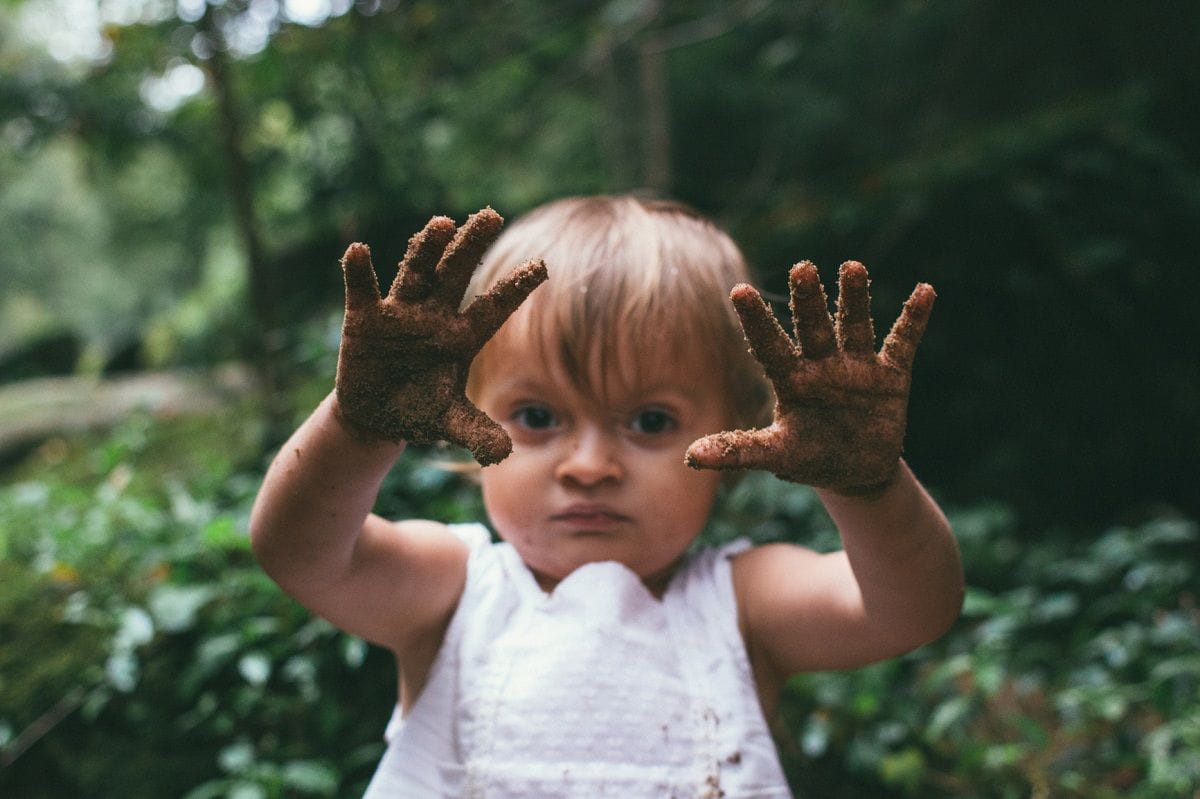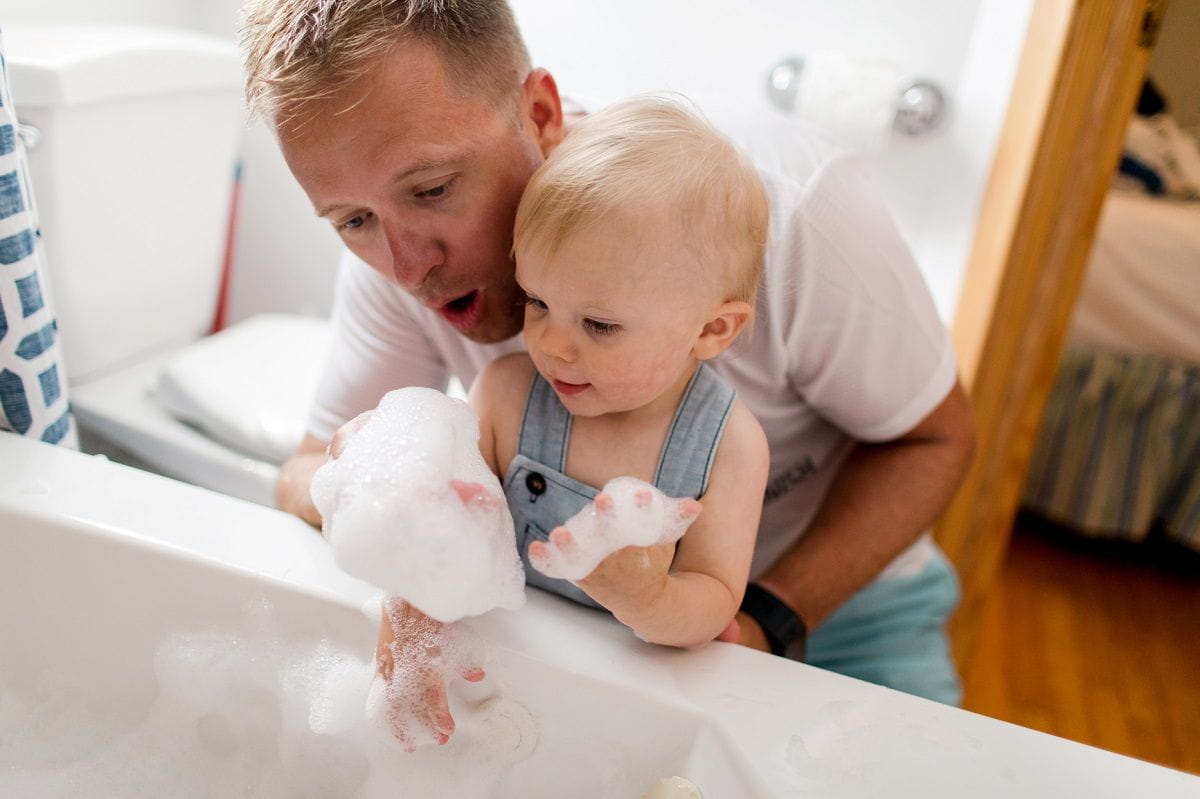April Showers=MUD PIES! This Sensory Activity Nurtures Tots' Growth

By Rachel Ward
It’s understandable if YOU don’t want to make mud pies. (Hey, it’s mud, and pies are messy.) But here at KinderCare, we love them. Why? In addition to being a heckuva lot of fun, mud pies are a major brain-builder.
Sensory experiences (activities that involve kids’ sense of touch, smell, or sight) are great for kids, but especially for the toddler set. “Toddlers are just starting to become mobile and to discover what the bigger world has to offer,” says Meg Davis from KinderCare’s Education team. “When they explore new textures—like gritty sandpaper or slippery silk—they’re actually building neural connections in their brains, which will help them learn even more.”
Enter mucky, mushy, beautiful mud.
Exploring New Textures Makes Tots' Brains Light Up
Our teachers mix a little clean soil and water in a pie tin to create mud, and then let the toddlers dive right into the good stuff as they mash, mix, mold, and squeeze the mud in their hands. (Don’t worry about messy clothes, parents—we use smocks!)
All that muddy fun helps toddlers build another crucial skill. “As toddlers manipulate mud,” explains Davis, “they’re working on building the small muscles in their hands, which paves the way for mastering tasks like using scissors and writing their names.” (Mud is miraculous, really.)
While tots enjoy playing, our teachers talk with them about how the mud feels. Why the dialogue? “When teachers or parents talk with children about the textures and introduce new words like mushy and slippery, toddlers get an extra boost to their literacy skills, too,” Davis says.
We’ve got the mud covered, but you can keep up the touchy-feely learning at home with (somewhat) cleaner textures. Take a look, and have fun!
Sensory Adventures Build Brain Power
*Safety tip: Make sure to always supervise your child when exploring textures.
1. Get Nitty-Gritty with Sand
Some kids do not like the feeling of sand between their toes, but for those who don’t go against the grain, dig in! If you don’t have a sand box (or a beach) nearby, you can make a “sand box” by pouring fine sand into a tub. Let your child put their feet in, pour, play and explore! Your job? Talk with them about what the sand feels like: gritty, smooth, soft, warm, crunchy, or cool.

2. Splash Around with Water and Bubbles
You can also make a water tub for fun warm-day play and even add some bubbles for outdoor suds fun. (Always supervise your kids around water of course!) Toss in some toys to show them how objects can float in water. And don’t forget to talk to your word-machine of a toddler: Are the bubbles soft and airy? Do they make a sound when they pop?
Get the idea about teaching toddlers with textures? As you go about your day, look for other ways to talk about how things feel. Sky’s the limit, but here are a few more ideas to teach your kids about adjectives like rough, smooth, soft, and crunchy:
- Rough: Let your tot feel the cement sidewalk as you walk, or have them feel Dad’s scruffly whiskers!
- Smooth: Is your child sitting on your hardwood floors? Bring their attention to how smooth the planks are.
- Soft: Laying down for bedtime? Talk about how soft the pillow and his stuffy are (and are they fuzzy, too?).
- Hard: Those wooden stacking blocks and big wooden puzzles are a lot of fun, but they’re a great way to talk about things that are hard (and maybe also smooth).





